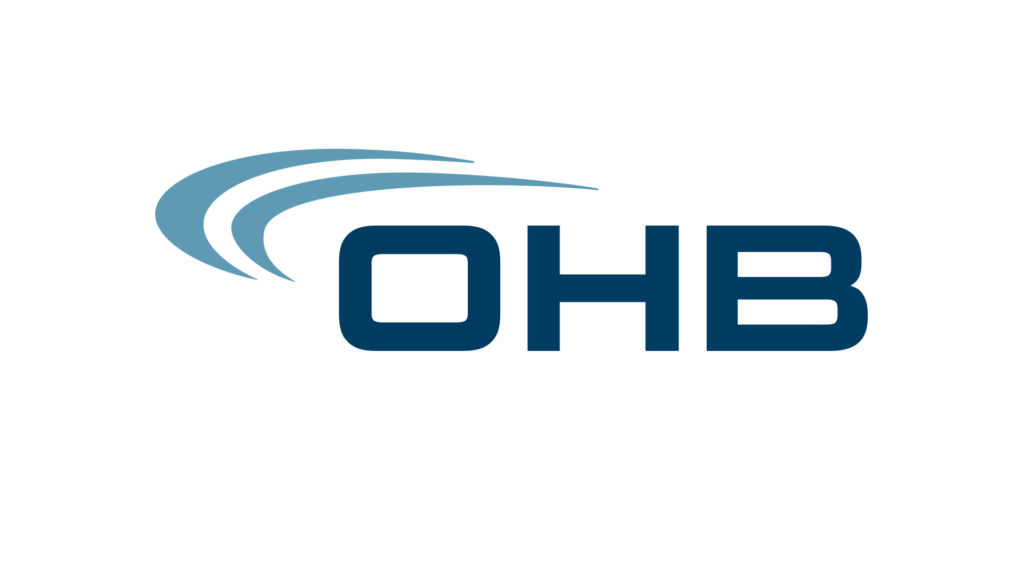Employee belonging is no longer a soft HR concept—it's a strategic lever for organizational success in 2025. As hybrid work becomes the norm and teams grow more diverse, leaders face a new challenge: how to foster genuine connection when physical offices and traditional events fall short. The answer lies in understanding the true nature of employee belonging and adopting innovative, AI-driven approaches that create real, lasting bonds among coworkers. In this guide, you'll discover why employee belonging matters, how to measure and build it, and how solutions like Neroia are revolutionizing workplace culture for the future.
What Does Employee Belonging Really Mean?
Employee belonging goes beyond simply being included in meetings or group chats. It’s about feeling seen, valued, and accepted for your authentic self—regardless of your background, role, or work location. In 2025, as teams span continents and cultures, belonging has become the glue that holds organizations together.
The difference between inclusion and belonging
Inclusion means being invited to participate; belonging means feeling at home. Inclusion is the open door, but belonging is the warm welcome inside. As Great Place To Work puts it:
"Belonging is an employee’s sense that their uniqueness is accepted and even treasured by their organization and colleagues."
While inclusion ensures everyone has a seat at the table, belonging ensures each person feels comfortable sharing their ideas, taking risks, and being themselves—without fear of judgment. This subtle but crucial distinction is why many well-intentioned diversity initiatives fall short: they stop at inclusion, missing the deeper need for connection.
Signs your staff feels they belong
How do you know if your team experiences true employee belonging? Look for these signals:
- Employees openly share ideas and feedback.
- Diverse perspectives are celebrated, not just tolerated.
- People form genuine friendships across departments and locations.
- Team members ask for help without hesitation.
- Employees participate in both work and social activities, even in hybrid settings.
- New hires quickly feel at ease and included.
When belonging is present, engagement and innovation flourish. When it’s missing, even the most talented teams struggle to thrive.
The Business Impact of Employee Belonging
Employee belonging isn't just a feel-good factor—it delivers measurable business results. Organizations that prioritize belonging outperform their peers in productivity, retention, and innovation.
Productivity, retention and innovation metrics
Research consistently shows the power of belonging:
- Employees with a high sense of belonging are 56% more productive (Harvard Business Review, 2019).
- Companies see a 50% reduction in turnover and a 75% decrease in sick days when belonging is strong (BetterUp, 2022).
- Teams with high belonging are three times more likely to look forward to work and five times more likely to stay long-term (Great Place To Work, 2023).
These numbers translate into millions in savings and revenue growth. For example, a 10,000-person company can save over $52 million annually by boosting employee belonging.
Hidden costs of non-belonging
The absence of belonging takes a silent but steep toll:
- Increased burnout and quiet quitting as employees disengage.
- Higher recruitment and onboarding costs due to churn.
- Missed opportunities for innovation as people hold back ideas.
- Fragmented teams, poor collaboration, and siloed knowledge.
- Negative employer branding, making it harder to attract top talent.
"If our lived experiences, our unique individual talents, and our backgrounds aren’t looked at as assets, we neglect the bigger picture of the people we say we serve."
— Montrece McNeill Ransom, Director, NCCPHT
In short, non-belonging drains both morale and the bottom line.
The Psychology Behind Workplace Connection
To build employee belonging, it helps to understand the psychological drivers behind connection at work.
Maslow revisited for modern workers
Abraham Maslow’s hierarchy of needs places belonging right in the center—above basic safety, but essential before anyone can reach their full potential. In 2025’s fast-changing workplace, this is more relevant than ever. Without belonging, employees can’t develop the confidence or motivation needed for creativity and growth.
Modern organizations must recognize that belonging is a gateway to self-actualization, not a luxury. When people feel they belong, they invest more energy, take healthy risks, and bounce back from setbacks.
Strong ties vs weak ties at work
Workplace relationships come in two flavors:
- Strong ties: Close connections, like trusted teammates or mentors.
- Weak ties: Casual acquaintances, such as colleagues from other departments or those you meet in cross-functional projects.
Both are vital. Research from the APA shows that weak ties—those hallway chats or quick coffee breaks—significantly boost life satisfaction and workplace happiness. Yet, hybrid work often erodes these weak ties, leading to isolation and disengagement.
Intentional efforts to foster both strong and weak ties are key to building a resilient, innovative team.
How to Measure Belonging in Your Organisation
You can’t improve what you can’t measure. Tracking employee belonging requires a mix of quantitative and qualitative methods.
Crafting effective survey questions
The best surveys go beyond surface-level engagement. Consider questions like:
- I feel comfortable being myself at work.
- My unique background and perspective are valued here.
- I have meaningful relationships with colleagues.
- I feel supported during times of change.
Confidentiality is crucial—employees must trust that their responses are safe and anonymous. Regular pulse surveys, integrated with platforms like Microsoft Teams or Neroia, make it easy to track trends over time.
Using qualitative signals
Numbers only tell part of the story. Look for these qualitative indicators:
- Stories shared in team meetings or social channels.
- Participation in voluntary activities, both online and offline.
- Willingness to give and receive feedback.
- Observed connections across departments and seniority levels.
Combining survey data with real-life observations provides a holistic view of employee belonging.
Eight Proven Strategies to Foster Employee Belonging
Building employee belonging is an ongoing process. The following strategies, supported by research and leading organizations, create environments where everyone can thrive.
Cultivating psychological safety
Psychological safety is the foundation of belonging. When employees feel safe to speak up, admit mistakes, or share new ideas, innovation follows. Leaders must model vulnerability, admit their own missteps, and invite honest feedback.
"You can’t do anything without psychological safety. I feel like it’s the oxygen of a culture."
— Sienna Lytle, Senior Manager, Diversity, Inclusion, and Belonging, HubSpot
Mentorship and sponsorship programs
Formal mentorship and sponsorship programs connect employees across backgrounds and seniority. These relationships help people navigate challenges, see paths for growth, and feel valued for their unique contributions. They are especially powerful for underrepresented groups.
Transparent decision-making
Transparency builds trust. When leaders openly explain decisions, share company goals, and invite input, employees feel included and invested in the organization’s direction.
Ordered List: Steps to Foster Belonging
- Establish psychological safety by encouraging open dialogue.
- Launch mentorship programs that pair diverse employees.
- Communicate decisions transparently and invite feedback.
- Celebrate both individual and team achievements.
- Involve employees in shaping new initiatives.
- Create onboarding experiences that welcome all backgrounds.
- Offer regular, small-group social opportunities.
- Regularly measure and act on belonging feedback.
Leading for Belonging in Hybrid and Remote Teams
Traditional, one-size-fits-all events often fail to foster employee belonging in hybrid settings. Standardized happy hours, virtual quizzes, or large webinars can feel impersonal and exclude those with different schedules or interests.
Intentional rituals for connection
Hybrid teams need new rituals that bridge physical distance. Examples include:
- Scheduled small-group coffee chats or walking meetings.
- Rotating team spotlights to share personal stories.
- Micro-events like virtual mindfulness sessions or hobby clubs.
- Celebrating cultural holidays from around the world.
Consistency and variety are key—regular, diverse activities help everyone find their place.
Technology tools that help
AI-powered platforms like Neroia are pioneering a new approach. By integrating with engagement tools (such as Microsoft Teams, pulse surveys, and wellness apps), Neroia’s platform curates micro-events tailored to employee interests and schedules.
For example, during an OHB pilot, Neroia’s AI orchestrated yoga sessions, company runs, and small-group lunches—each matched to participants’ preferences. The platform’s anonymized analytics help HR teams understand what’s working, while protecting employee privacy.
"With Neroia, employees effortlessly discover authentic connections with coworkers—no planning stress, just meaningful moments that build real community."
Embedding Belonging into Culture for the Long Term

Sustainable employee belonging isn’t a one-time project. It requires ongoing attention, measurement, and iteration.
Tracking progress and iterating
Regular pulse surveys, combined with anonymized analytics from platforms like Neroia, provide actionable insights. Track participation rates, feedback on events, and changes in engagement over time. Use this data to refine programs and address emerging needs.
Linking belonging to DEI roadmaps
Belonging should be woven into your organization’s diversity, equity, and inclusion (DEI) strategy. This means:
- Setting clear goals for representation and inclusion.
- Regularly reviewing progress and sharing updates.
- Creating safe spaces for dialogue on identity and experience.
- Ensuring that all employees—regardless of background—feel a sense of community.
Table: Comparing Traditional vs. AI-Driven Belonging Initiatives
Bullet List: Why Conventional Initiatives Often Fail in Hybrid Settings
- Standardized events don’t reflect diverse interests or schedules.
- Hybrid isolation makes it hard to form weak ties and casual connections.
- Manual planning leads to event fatigue and low participation.
- Large groups can feel intimidating or exclusive.
- Lack of integration with daily workflows means missed opportunities for connection.
Bullet List: How Neroia’s Platform Overcomes These Challenges
- AI curates micro-events based on individual preferences and availability.
- Seamless integration with existing engagement tools and calendars.
- Promotes both strong and weak ties through diverse, small-group activities.
- Anonymized analytics ensure privacy while guiding continuous improvement.
- Reduces planning friction and encourages authentic, organic relationships.
The Neroia Difference: Pioneering Belonging for the Future
Neroia’s vision is to revolutionize workplace culture by harnessing artificial intelligence to foster real, lasting employee belonging. Unlike traditional benefits or standardized events, Neroia’s platform creates a dynamic ecosystem where every employee can effortlessly discover meaningful connections—whether they’re in the office, remote, or somewhere in between.
By leveraging AI to recommend activities like mindfulness workshops, cycling groups, or cultural exchanges, Neroia breaks down silos and nurtures both strong and weak ties. Its commitment to privacy, integration with existing tools, and focus on small-group, interest-based events set a new standard for workplace engagement.
In a world where hybrid work is here to stay, Neroia’s approach aligns perfectly with 2025 trends: psychological safety, diversity-focused engagement, and the power of micro-connections. The result? Higher well-being, better retention, and teams that don’t just work together—they belong together.
"Belonging isn’t just about being present—it’s about feeling valued, connected, and inspired to bring your whole self to work. With Neroia, organizations can finally make that vision a reality."
Ready to transform your workplace? Choose Neroia to build a culture of true employee belonging—where every connection counts, and every employee thrives.




